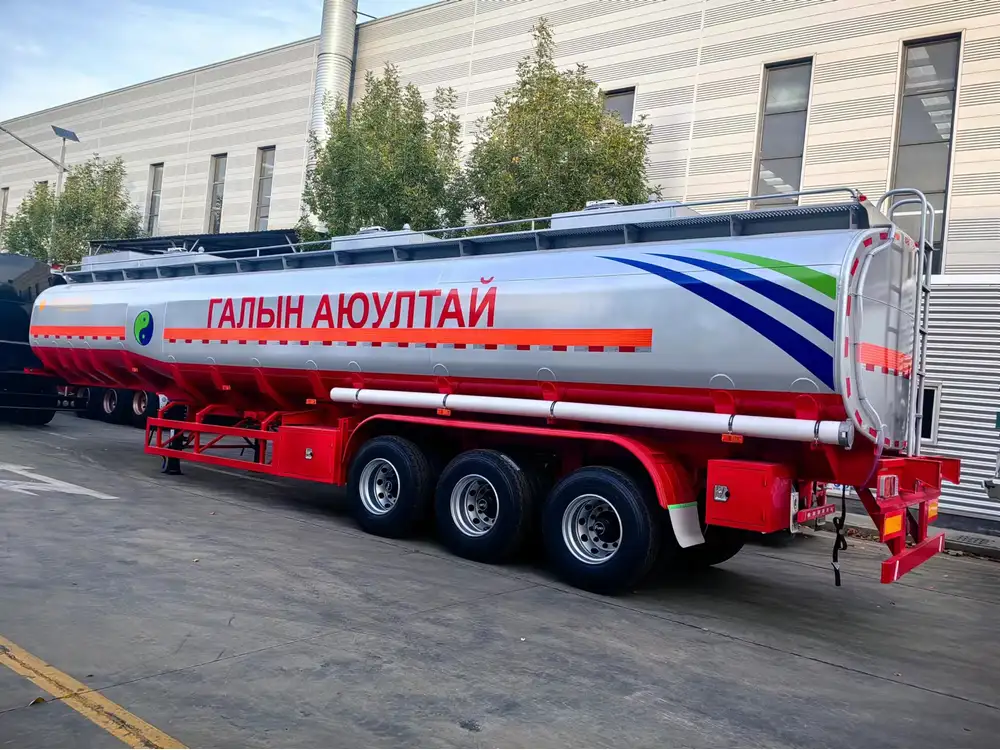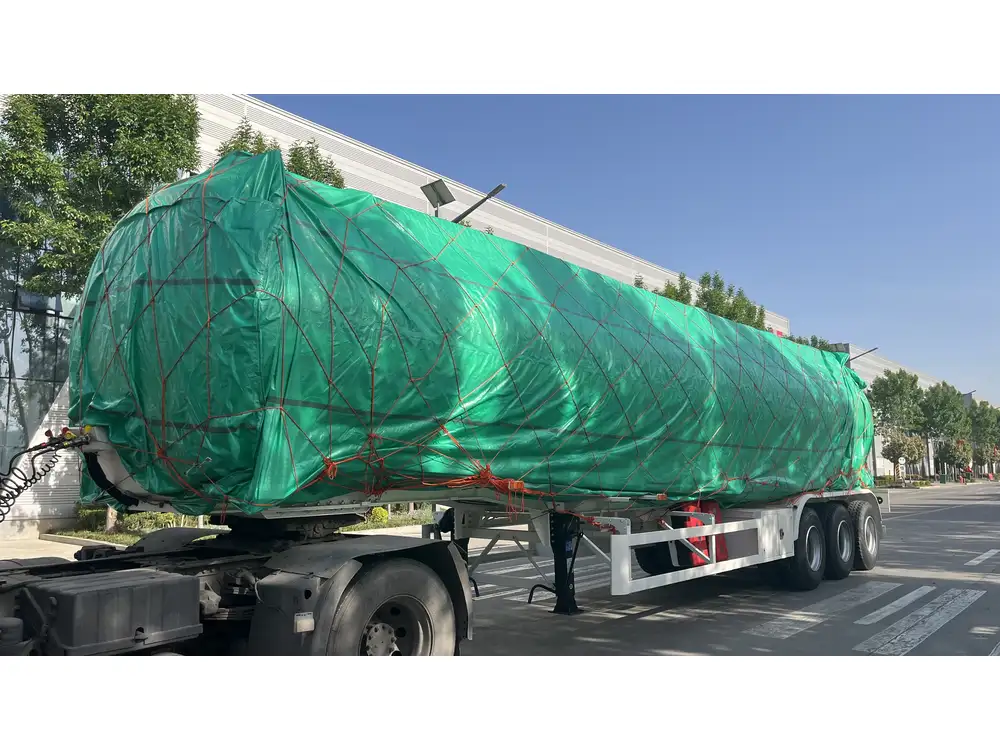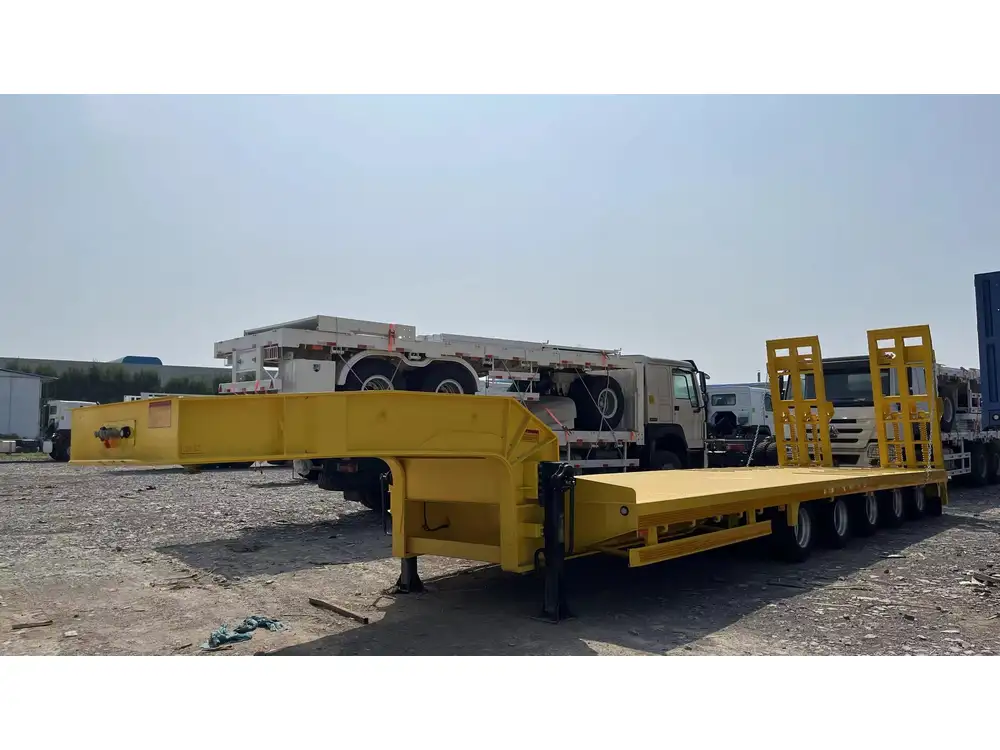When it comes to heavy hauling, the question “Can a Ford F-150 pull a dump trailer?” is often on the minds of both potential buyers and existing owners. Understanding this capability isn’t merely about the truck’s towing capacity; it encompasses various factors such as payload, trailer design, and driving conditions. This article aims to delve deeply into the specifics of towing a dump trailer with a Ford F-150, providing you with a comprehensive overview that combines technical details, practical considerations, and tips for optimizing your towing experience.
Understanding the Ford F-150’s Towing Capacity
Before assessing the compatibility of the Ford F-150 with dump trailers, it’s essential to grasp the truck’s towing capacity. The Ford F-150 comes with multiple engine options, each catering to different hauling needs. Here are the key specifications:
| Engine Option | Towing Capacity | Payload Capacity |
|---|---|---|
| 3.3L V6 | Up to 8,200 lbs | Up to 1,985 lbs |
| 2.7L EcoBoost V6 | Up to 9,000 lbs | Up to 2,480 lbs |
| 5.0L V8 | Up to 13,000 lbs | Up to 3,325 lbs |
| 3.5L EcoBoost V6 | Up to 14,000 lbs | Up to 3,325 lbs |
| 3.5L PowerBoost Hybrid | Up to 12,700 lbs | Up to 2,120 lbs |
Factors Influencing Towing Capacity
The towing capacity of the Ford F-150 depends on several factors:
- Engine Configuration: The truck’s engine significantly influences how much it can tow. For instance, the 3.5L EcoBoost V6 tends to have the best towing capacity.
- Axle Ratio: Different axle ratios can affect the ability to pull heavier loads.
- Towing Package: Ford offers towing packages that enhance the truck’s features, including heavier brakes, stronger suspension, and added trailer stability controls.
- Trailer Type: The design and weight of the trailer, including its cargo, impact the performance of the towing vehicle.

Compatibility of Dump Trailers with Ford F-150
Weight Considerations
Knowing your dump trailer’s weight and the cargo load is crucial. Typical dump trailers weigh between 2,500 and 5,000 lbs when empty, and their gross vehicle weight rating (GVWR) can exceed 10,000 lbs when loaded. Therefore, calculating the combined weight of both the trailer and any cargo is fundamental to ensure it falls within the towing limitations of the F-150.
Example Calculation
If using a dump trailer with a weight of 3,500 lbs and a load of 5,000 lbs:
- Total Weight = 3,500 lbs (trailer) + 5,000 lbs (load) = 8,500 lbs
In this scenario, if you drive a Ford F-150 with a 2.7L EcoBoost engine (with a maximum towing capacity of 9,000 lbs), you would be within allowable towing limits.

Trailer Brake Requirements
Dump trailers often require a brake system, which is essential when the load is substantial. For trailers over 3,000 lbs, a brake controller is recommended (or required in many regions). Proper brake operation ensures safe stopping, providing added stability while towing.
Hitch Selection
Utilizing the right hitch is pivotal. Dump trailers typically use a 5th wheel or gooseneck hitch for better weight distribution and control. It’s imperative for F-150 owners to select an appropriate hitch based on the intended use and trailer type.
| Hitch Type | Max Weight | Pros | Cons |
|---|---|---|---|
| Receiver Hitch | Up to 10,000 lbs | Easy installation | Limited stability at high weights |
| Gooseneck Hitch | 10,000+ lbs | Improved weight distribution | Requires truck bed modification |
| Fifth Wheel Hitch | 12,000+ lbs | Superior control | More complex setup |
Considerations for Safe Towing

Load Distribution
Properly distributing the load within the dump trailer can enhance stability and safety. Ensure that the heaviest materials are positioned over the axles to improve balance while towing.
Driving Techniques
Towing a dump trailer requires adjusting driving habits:
- Acceleration: Gradually increase throttle to avoid losing traction.
- Braking: Begin to slow down well in advance to accommodate trailer weight, especially on downhill grades.
- Turning: Make wider turns to ensure the trailer clears obstacles.
Maintenance Checks
Regular maintenance of both the Ford F-150 and the dump trailer is essential:
- Inspect the hitch for wear and tear before transit.
- Check tire pressure to maximize performance and fuel efficiency.
- Verify brake system functionality to enhance safety.

Potential Challenges When Towing a Dump Trailer
Weight Issues
Exceeding the truck’s payload or towing capacity can lead to serious safety concerns, including brake failure, steering issues, and potential damage to the truck. Always consult the owner’s manual for specific specifications.
Weather Conditions
Driving while towing a dump trailer in adverse weather can pose significant risks. Wet or icy conditions reduce traction and extend braking distance, thereby escalating the potential for accidents. It’s advisable to postpone towing in severe weather where visibility is compromised.

Legal Regulations
Towing regulations vary by state. Specific laws dictate trailer size, weight limits, and brake requirements. Familiarizing yourself with local laws ensures compliance and safety.
Conclusion
So, can a Ford F-150 pull a dump trailer? The answer is a definitive yes, provided that the trailer’s weight falls within the truck’s towing capacity and the proper precautions are followed. By understanding your truck’s specifications, maintaining your equipment, and adhering to best practices for safe towing, you can successfully haul materials with confidence and efficiency.
Additional Resources
- Ford Owner’s Manual: To understand the specific towing capacities and requirements for your model.
- Local Regulations: Review your state’s Department of Transportation website for detailed towing laws.
- Trailer Safety Guidelines: Investigate resources from organizations like the National Highway Traffic Safety Administration (NHTSA) for comprehensive towing safety tips.
By taking the time to follow these guidelines and ensuring that your setup is correct, you can turn your Ford F-150 into a reliable hauling machine capable of managing dump trailers and more.



